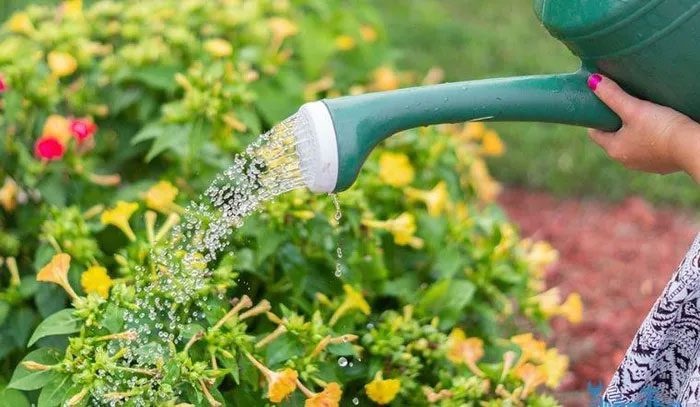Let’s explore what hazardous waste is and how it pollutes the environment! Hazardous waste poses a significant threat to the environment through various channels, as discussed in the following article.
What is Hazardous Waste?
Hazardous waste refers to waste materials that may be generated from industrial, commercial, and agricultural activities. These wastes can be solid, liquid, gas, or even gel-like substances. While the definition typically excludes household waste, it can be challenging to completely differentiate industrial waste from domestic waste. Notably, hazardous waste does not include radioactive waste, as most countries have separate regulations for this type.
The toxicity of hazardous waste varies significantly. Some substances are dangerous to human health, such as low flash point flammable materials, pesticides, and slowly degrading chlorinated materials. Others, despite having a lower mass, can still pose substantial risks, such as mining waste, slag, old phosphogypsum, or other hydroxides. Waste containing incompatible chemicals can be explosive or flammable, and exposure to strong acids or alkalis can cause severe burns. Skin contact with certain pesticides can lead to acute toxicity. If chemical waste containers are not properly handled and are carelessly stored in unprotected areas, they can lead to serious poisoning incidents.

Hazardous waste is generated from industrial, commercial, and agricultural activities.
Three main groups of hazardous waste can be identified:
Group 1 includes wastes with high levels of toxins, that are volatile, persistent, or bioaccumulative. Examples:
- Chlorinated solvents
- Mercury waste
- PCB waste
Group 2 encompasses other typical wastes such as hydroxides.
Group 3 consists of large-volume waste that may have low toxin levels but can cause significant harm on a larger scale.
How has hazardous waste been addressed?
Attention to hazardous waste has only emerged in the last 10 to 15 years. Monitoring of hazardous waste typically becomes a priority only after a disaster occurs or an environmental threat is identified.
Following the tragedy of residents dying from mercury-contaminated fish in the sea at Minamata, Japan became the first country to implement comprehensive hazardous waste monitoring (1960).
In the UK, public outcry arose when empty barrels containing cyanide were discovered on wasteland where children had played, leading to the establishment of a high-level hazardous waste monitoring committee, later sanctioned by law.
In the US, a hazardous waste monitoring system was established in 1976 due to public opposition against pollution caused by uncontrolled landfills.
While monitoring hazardous waste can be costly, experience from many developed nations indicates that addressing the “mistakes of the past” often incurs significantly higher costs, sometimes 10 to 100 times more.
How does hazardous waste pollute the environment?
Hazardous waste can directly pollute the environment through chemical vapors in the atmosphere or indirectly through transportation by wind or surface water. The key issue depends not only on the disposal site but also on the underlying soil conditions.
Soil and Water Pollution
The presence of the unsaturated zone beneath the waste disposal site is crucial. This zone, located above the water table, allows water to percolate down until it encounters lateral flowing water. If the area beneath the waste is unsaturated, groundwater movement acts as a filtering process through chemical and biochemical activities.
Surface Water Pollution
The surface water near the waste site can receive hazardous waste from surface runoff. Furthermore, soil-water flow of chemicals also contributes to pollution of surface water. Under aerobic conditions, chemical and biochemical degradation of organic compounds is accelerated. Evaporation from surface water occurs more readily than from soil.
Other Pollution Pathways
Organic compounds can volatilize into the air, with wind carrying hazardous waste into the environment. Crops grown near waste sites may absorb toxins from the waste.
Can municipal wastewater be used directly for irrigation?
Every day, large and small cities release substantial amounts of wastewater into the environment, comprising both industrial and domestic wastewater. This wastewater contains many essential nutrients such as nitrogen and phosphorus, which are beneficial for crops. Some countries have utilized municipal wastewater for direct irrigation of fields with varying results; some have seen significant increases in agricultural yields, while others have experienced severe losses.

Many countries have utilized treated municipal wastewater for agricultural irrigation.
Scientists have long warned against using untreated municipal wastewater directly for irrigation due to the presence of harmful heavy metals such as cadmium, zinc, lead, and mercury, as well as organic compounds that are difficult to decompose and pathogenic microorganisms. These toxins directly contaminate food crops and can have serious consequences for human health if ingested.
However, this does not mean we should waste municipal wastewater. Efforts have been made to utilize this infinite source by removing heavy metals, harmful organic compounds, and pathogens before using it for irrigation. Treated municipal wastewater not only avoids contaminating food crops but can also enhance crop yields while further purifying the wastewater, reducing pollution in rivers and lakes. This method represents the most scientific approach to wastewater utilization and is being implemented by many countries.
- This watch, without diamonds or gems, is still priced at nearly 6 billion VND, earning a Guinness record for its unique achievement
- New invention turns seawater into fresh water using solar energy
- The fruit ‘more expensive than meat’ in Vietnamese markets is a ‘natural cancer remedy’ that effectively lowers blood sugar


















































